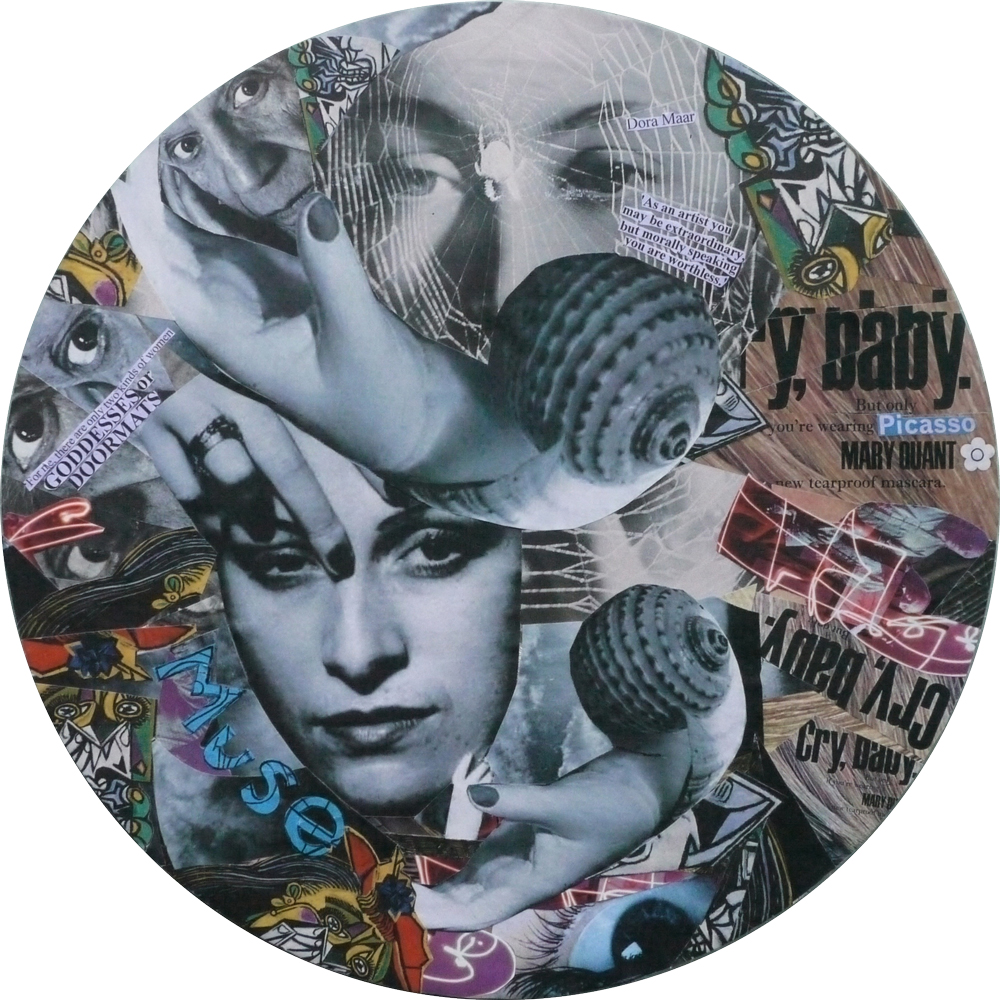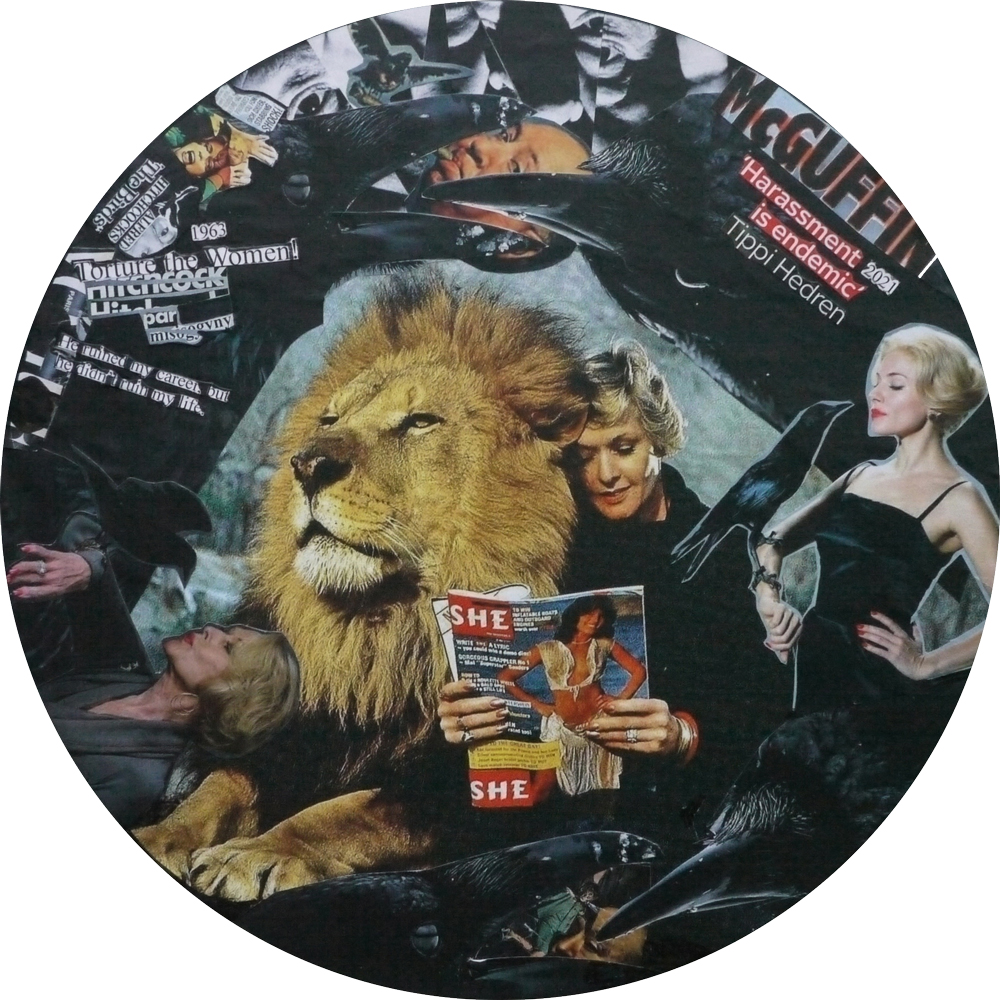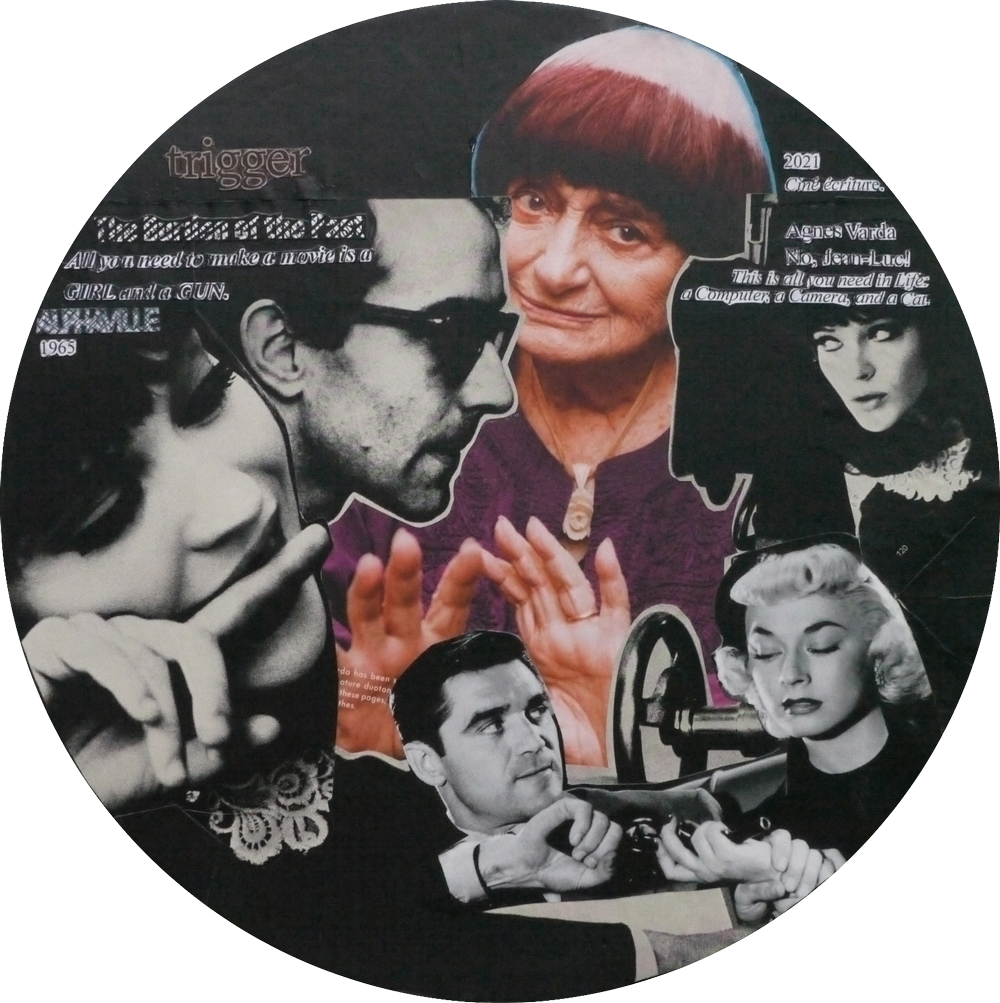




Cathy Greenhalgh is a multi-disciplinary artist, film-maker (director-cinematographer), lecturer and media anthropologist living in London. She originally worked with collage as a research tool for her film work, but discovered a passion for it in its own right during the pandemic as she embarked on an artistic journey to chronicle this unprecedented time: “Collage practice has revealed new ways to combine humour and politics with aesthetic properties of juxtaposition, cinematics, text, and the playfulness of absurdist possibility.” Each of her varied artistic practices have ecological, cultural and political undertones. The sensory ethnographic and material culture basis underlying her research foregrounds historiography and spectrality, collaboration and technical innovation, rather than primarily theoretical interpretation.
In her “Recompose” series, Greenhalgh set out to explore the distorted relationship between male artists who are often venerated as geniuses no matter the harm they may cause in pursuit of their art, compared to their female counterparts who are often not only maltreated at the time, but forgotten in history afterwards. In each piece, Greenhalgh recenters an older image of the woman as the central focus, casting the man to the periphery with text of his abusive or misogynistic language. Dora Maar, whose relationship with the much older Picasso is often credited as ending her artistic career at its height, upstages the painter with images of her own art in Muse; Tippi Hedren, well known as an inspiration for Alfred Hitchcock despite his regular abusive treatment of her on the set of The Birds, outshines the filmmaker who is nearly obscured by crows in McGuffin; Agnes Varda’s cinematic work exploring the rich, inner lives of women, in contrast with Jean-Luc Godard’s films which often objectified and hypersexualized women, was appropriately honored later in her life and she likewise commands center stage in the piece Trigger. Using imagery from 1960s Vogue magazines, cake bases as canvases, and her prolific knowledge of film history, Greenhalgh has created a series that investigates gender representation, attention economy, perception and memory.